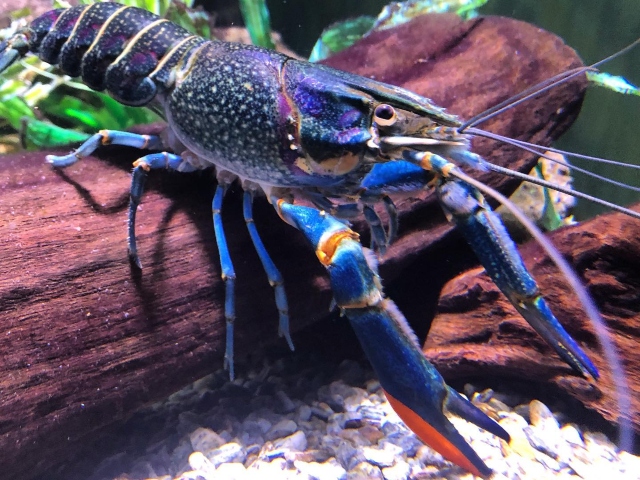
-
Invasive Redclaw Crayfish Are Moving Into Kruger National Park
15 Feb 2024 by Heinrich in Animals, Environment, Lifestyle, Nature, South Africa
[imagesource:facebook/cairnsaquarium]
Africa has no native freshwater crayfish species, with the closest ecological equivalent being freshwater crabs. However, the first crayfish sighting in Kruger National Park (KNP) happened in February 2016, in the Crocodile River, near the park’s border.
Following the 2016 discovery, crayfish invasion was identified as a major hazard to the ecosystems of Kruger rivers, necessitating close monitoring and management. Seven years later, in May 2023, Sanparks placed crayfish traps in the Crocodile River at Crocodile Bridge, about 50 kilometres downstream of Van Graan Dam, to see how far the little critters had travelled.
Three Redclaw crayfish were caught, showing that these invaders had been heading downstream at a steady clip of seven km/year.
Although crayfish were previously only recorded upstream of the Crocodile River (also in the Komati River) it is believed they are now on a march into Kruger from there.
The Redclaw crayfish is native to Northern Australia and Papua New Guinea, but it has been spread throughout the world because of aquaculture and aquarium trade. Crayfish invasions are a severe conservation concern because they harm biodiversity. As they travel upriver in Kruger, fish populations, other crab species and a host of aquatic life need to make way.
Redclaw crayfish devour more fish fry and plant material than native crabs, regardless of water temperature. They also harm fisheries and can even destroy fishing gear. In Lake Kariba, they cost Zimbabwean fisheries up to R9 million each year.
As with many invasive species, removing the crayfish from a water system is almost impossible once they are established, so preventing, or at least limiting their spread is crucial to the Kruger’s rivers.
Sanparks should consider opening a crayfish restaurant on the banks of the Crocodile River. Redclaw crayfish is considered a delicacy and is arguably healthier than traditional seafood since it’s low in fat, cholesterol, salt, and microplastics. Kruger could use the proceeds for conservation. Two crayfish with one stone.
[source:sanparks]
Latest News
-
Game, Seth, Match – Goodbye 2024
Hey Guys - thought I’d just give a quick reach-around and say a big thank you to our rea...
-
Breakfast Of Champions: Hollywoodbets Kenilworth Racecourse Breakfast Gallops Is Back!
[imagesource:CapeRacing] For a unique breakfast experience combining the thrill of hors...
-
Need NYE Plans? Cafe Caprice’s Night Of Enchantment Masquerade Party Could Do The Trick
[imagesource:howler] If you're still stumped about what to do to ring in the new year -...
-
Buckingham Palace Steps In After Staff Christmas Party Spirals Out Of Control
[imagesource:maxandeli/facebook] It's not just in corporate that staff parties get a li...
-
Designer Babies Are Running Into Trouble As Teens, Grappling With Being ‘Experiments’
[imagesource:here] Imagine being born with the weight of your parents’ version of per...
-






























